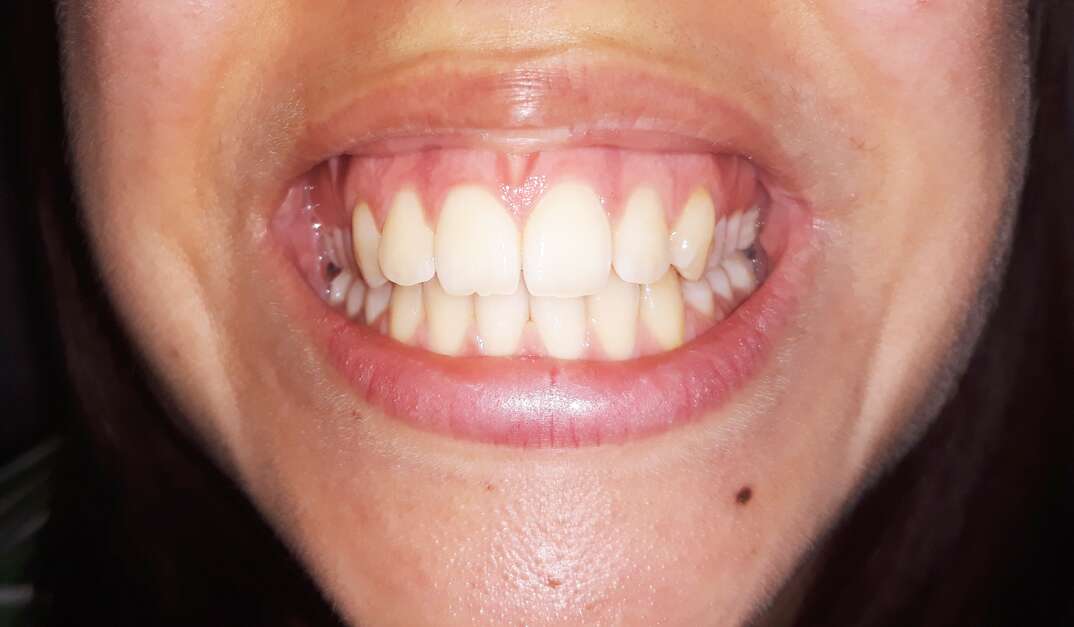What Are Veneers?

Your smile shows your emotions, but imperfections with your teeth can make you hold back.
Dental veneers offer a cosmetic option to improve the look of your teeth, which can boost your confidence.
What Are Veneers?
Dental veneers are thin shells or coverings that go over the front surfaces of your natural teeth. They're custom-made to fit your teeth precisely and are made of either composite or porcelain in natural tooth shade. People get dental veneers to cover the imperfections in their natural teeth, including chips, breaks, stains, gaps, small teeth or misshapen teeth.
You can choose from a few different types of veneers. For traditional veneers, the material is the main difference. You can also opt for veneers that don't alter your natural teeth. Types of teeth veneers include:
- Porcelain: Porcelain is typically the strongest option and will last the longest. It can also cover a wide range of tooth imperfections. However, it's also the most expensive option and requires more of your natural teeth to be removed during the preparation.
- Composite resin: Composite resin is also a strong option, but it typically doesn't last as long as porcelain, and it tends to stain more easily. Composite might not be an option for more severe tooth imperfections. However, it's a cheaper option, and you typically don't need to have as much enamel removed.
- No-prep: While this option is called no-prep, it often requires your dentist to remove a small amount of your natural tooth or at least etch the surface to help the veneers stick. However, it's less invasive than porcelain or composite resin veneers. They're custom-made from porcelain and bonded like traditional veneers. They can feel bulkier because your dentist doesn't remove part of your tooth.
- Removable or pop-on: These veneers aren't permanent and can be removed easily, much like a retainer. Because they're not bonded to your teeth, these veneers can sometimes make it challenging to do things like speak clearly or eat.
Your cosmetic dentist can help you decide which dental veneer type is right for your situation. Your desired outcome and the type and severity of imperfections you're trying to cover often help determine which option will work best.
More Related Articles:
- How Often Should You Go to the Dentist?
- Do Dentists Offer Payment Plans?
- Everything You Need to Know About Emergency Dentists
- How Much Does a Dental Cleaning Cost?
- How Much Do Dentures Cost?
What Does the Process of Getting Veneers Look Like?
The process of getting dental veneers varies depending on which type you choose. Porcelain veneers typically require multiple appointments. You can expect the following steps for this option:
- The dentist removes part of your tooth enamel from the fronts and sides of your teeth to accommodate the veneers.
- They take an impression of your teeth to customize the veneers.
- A dental lab makes the individual veneers, which can take several days.
- At your follow-up visit, your dentist places the veneers on your teeth to make sure they fit properly.
- The dentist cleans your teeth before bonding the veneers to them.
Composite resin veneers are a little different. You'll typically need just one appointment. The following steps are common for this option:
- Your dentist starts by removing a small portion of your natural teeth but typically not as much as for porcelain.
- They select a color that blends well with your natural teeth.
- The resin composite material is bonded to your teeth and sculpted to get the correct shape.
- Your dentist hardens the material using a special light.
- They smooth and polish the hardened composite material for a natural look.
Are Veneers Permanent?
Most types of dental veneers are permanent because your dentist has to remove part of your natural teeth to accommodate the veneers. The dental veneers last an average of 10 to 15 years, but the amount of time yours last depends on the material and how well you take care of them. You'll need to have the veneers replaced when they reach the end of their life. Signs that it's time for new veneers include:
- Chipping
- Cracking
- Discoloration
- Rough edges
- Gaps between veneers and gums
It's important to visit your dentist regularly, even with veneers. Your dentist can help you determine when it's time to replace the veneers.
Elocal Editorial Content is for educational and entertainment purposes only. The information provided on this site is not medical advice. Editorial Content is not intended to be used for diagnosis or treatment. We are not physicians or a substitute for advice from a physician. The opinions, beliefs and viewpoints expressed by the eLocal Editorial Team and other third-party content providers do not necessarily reflect the opinions, beliefs and viewpoints of eLocal or its affiliate companies. Use of the Blog is subject to the
Website Terms and Conditions.The eLocal Editorial Team operates independently of eLocal USA's marketing and sales decisions.



